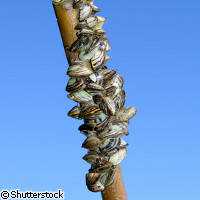European strategy to tackle invasive species urgently needed, says Commission
The European Commission (EC) has called for the development of an EU-level strategy for preventing, controlling and eradicating invasive species that threaten European biodiversity and economic stability. The Commission has put forward several options to be considered by the European Council and other institutions; and while a new strategy is discussed, the EC will continue to support targeted scientific research efforts. The term 'invasive species' describes non-native plants, animals and insects that thrive in their new surroundings and cause serious damage to ecosystems, crops and livestock. The impacts on agriculture (beetles eating leaves), forestry (root systems that cause soil erosion), commercial fisheries (reduced catches), infrastructure (intake pipes blocked by pesky mussels) and human health (allergies, skin problems, West Nile virus) are difficult to ignore. A recent estimate puts the costs of damage and eradication efforts and the economic impact of invasive species at between EUR 9,600 million and EUR 12,700 million per year in the EU alone. The Commission's communication on invasive species stresses the importance of meeting its goal to halt the decline of biodiversity by 2010. To that end, according to the report, it is crucial to harmonise legislative efforts to control the spread of invasive species, especially between neighbouring countries and sub regions. There are several existing tools for tackling invasive species in Europe, including the Plant Health Directive, the Wildlife Trade Regulation, the Ballast Water Convention and many others. However, according to the report, 'No unified system exists to monitor and control invasive species and their effects on biodiversity. The fragmented measures in place are unlikely to make a substantial contribution to lowering the risks which invasive species pose to European ecosystems.' The Commission describes a three-stage hierarchical approach to invasive-species management that it believes should be adopted across the continent: prevention, early detection and eradication, and control. Prevention is cheapest, but of course early detection and rapid eradication are essential. For these to be successful, the 'effective exchange of information and implementation of coordinated campaigns/actions to control/stop the spread of the species concerned' are of primary importance. The Commission has put forward three policy options: maximising the use of existing legislation, which entails Member States voluntarily making invasive-species control part of their border function; adapting existing legislation, which poses a significant coordination challenge; or setting up a comprehensive, dedicated legal framework, which would be expensive. The last option is put forward as the most favourable for effective action. According to the communication, 'There is still a lot to learn about the magnitude and pathways of invasive species, how they impact on ecosystems, and how climate change will affect biological invasions.' While it works with other institutions and stakeholders to agree on the best approach, the Commission has called for continued scientific research on invasive species and highlighted the important contributions of the DAISIE ('Delivering alien invasive species inventories for Europe') and ALARM ('Assessing large-scale environmental risks with tested methods') projects, both funded under the Sixth Framework Programme (FP6) and the LIFE+ programme, the European Fund for the Environment. The DAISIE project made a substantial contribution to 'early warning' capabilities by developing an up-to-date inventory of all alien species known to inhabit Europe. Their inventory identifies priority species and provides a platform for European reporting on biodiversity indicators, and also highlights areas where Europe will need to direct resources to manage biological invasions. It is hoped that this inventory will continue to be developed, encouraging the exchange of data between different regions and serving as part of a 'Global Information System for Invasive Species'. ALARM develops and tests methods to assess large-scale environmental risks in order to minimise negative direct and indirect human impacts. 'The Global Monitoring for Environment and Security (GMES) initiative could also be a valuable tool for the monitoring and control of the impact of invasive species on the environment,' the communication adds. 'Further research can contribute to a better understanding of invasive species and the pathways of their introduction as well as the risks and severity of occurrences [...] Research and monitoring results together with initiatives such as open-access online journals can all contribute to the development of information systems on invasive species,' the report concludes.



